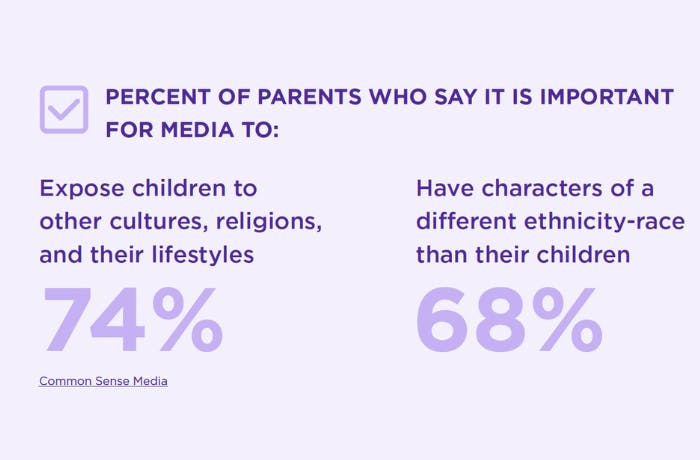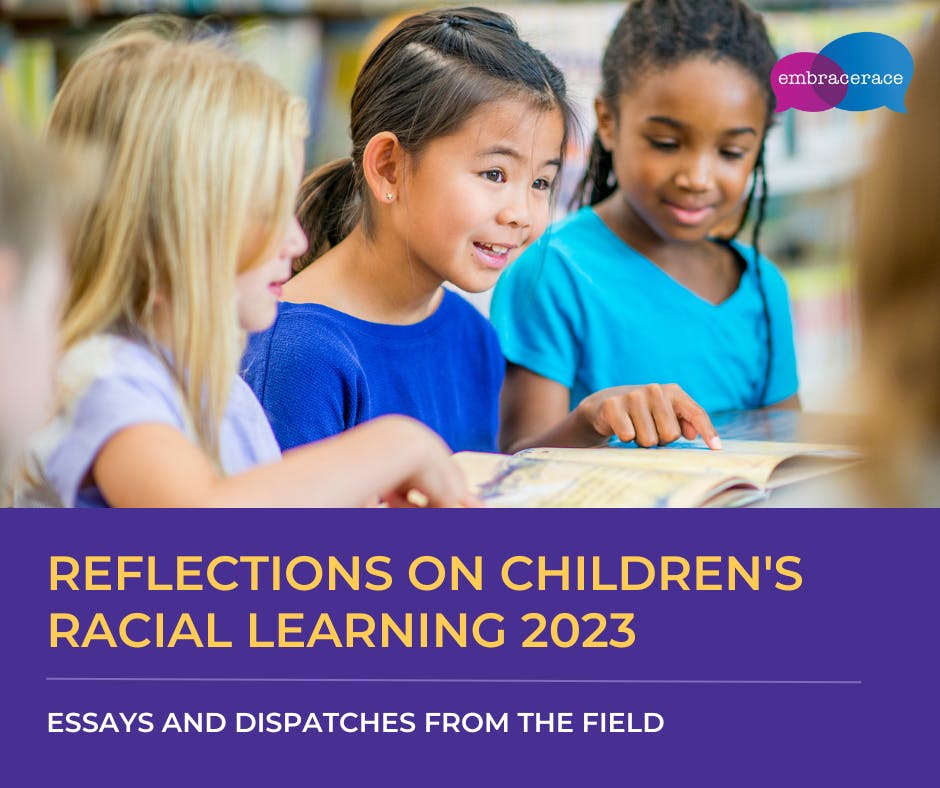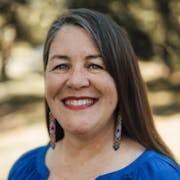Reflecting Our Children in Their Full Humanity
by Megan Dowd Lambert and Traci Sorell, from EmbraceRace's 2023 Reflections on Racial Learning

In 2021, Native artist Michaela Goade (Tlingit) won the Randolph Caldecott Medal for her illustration of the picture book We Are Water Protectors, written by Carole Lindstrom (Anishinabe/Métis). She was the first-ever woman of color to win this prestigious award in its 80+ year history.
We have been waiting and hoping for a BIPOC woman to win the Caldecott. From a marketing standpoint, books that win medals stay in print and reach more readers. This win was a particular joy because We Are Water Protectors, written and illustrated by Indigenous women, tells a story of contemporary Indigenous people. It’s clear Goade is grounded in connection to community and in being culturally accurate and authentic. She does the research, and she understands how important it is to show every character in their full humanity.
Goade’s Caldecott win also signaled support for how mainstream publishing is finally starting to listen to and hold space for accurate and authentic representations of BIPOC and LGBTQIA+ people in children’s literature. Our hope is that such openness and inclusivity will become an integral part of how the industry operates moving forward because this is about true representation of our child population. The majority of people in the U.S.under age 30 are non-White—even more so under age 18. This is the world our children are growing up in, and we need to reflect their reality by giving children true reflections of themselves and their peers. That’s what they deserve. We all deserved that as children. And there are so many stories to tell! There are 574 Native Nations federally recognized in the U.S.—that’s not counting groups still seeking recognition. We need stories from all of those!
This need is also about more than representation. It’s about honesty, humility, curiosity, and openness to learning more. Diverse books offer opportunities to practice humility, to learn things society teaches us to look away from. This isn’t a sacrifice, but an invitation. Aren’t we lucky to have an invitation to learn more and to grow beyond where we are?

Of course, we’ve still got work to do in terms of inclusivity in American children’s book publishing. (1) For those outside the industry, make it known that this is the content you want. Buy books from smaller, tribally owned presses and BIPOC-owned presses, (2) which highlight voices who are really connected to their communities. Follow Native creators on social media, because they will lead you to titles you might not otherwise see. Follow independent Native- or Black-owned bookstores (3) and see what they’re putting on their shelves. Pre-order these books for your school, your library, your home. To the extent you can, put your money where your values are. Go to your library and request them so that everyone has access. Wear your library out with requests!
Finally, remember that as adults, we can be informed, we can be healed, and we can learn from these books just as much as our young people. Learning, growing, and evolving is part of the human experience. Another part is to be in relationship with each other—which is impossible to do if we do not recognize each other’s full humanity. Literature and the arts give us ways of fostering that connectivity and reciprocity.

This article comes from the introduction of Inaugural EmbraceRace Reflections on Children's Racial Learning. Download all the reflections from leaders attending to children's racial learning in parent practice, education, healthcare, children's media and social science research.
References
- Cooperative Children’s Book Center (n.d.) CCBC Diversity Statistics. University of Wisconsin-Madison School of Education.
- Cooperative Children’s Book Center (2022, May 18).Small presses owned by Black, Indigenous, and People of Color. University of Wisconsin-Madison School of Education.
- We Need Diverse Books (2020, November 21).Diverse-owned bookstores you can support right now.
Megan Dowd Lambert

Traci Sorell



